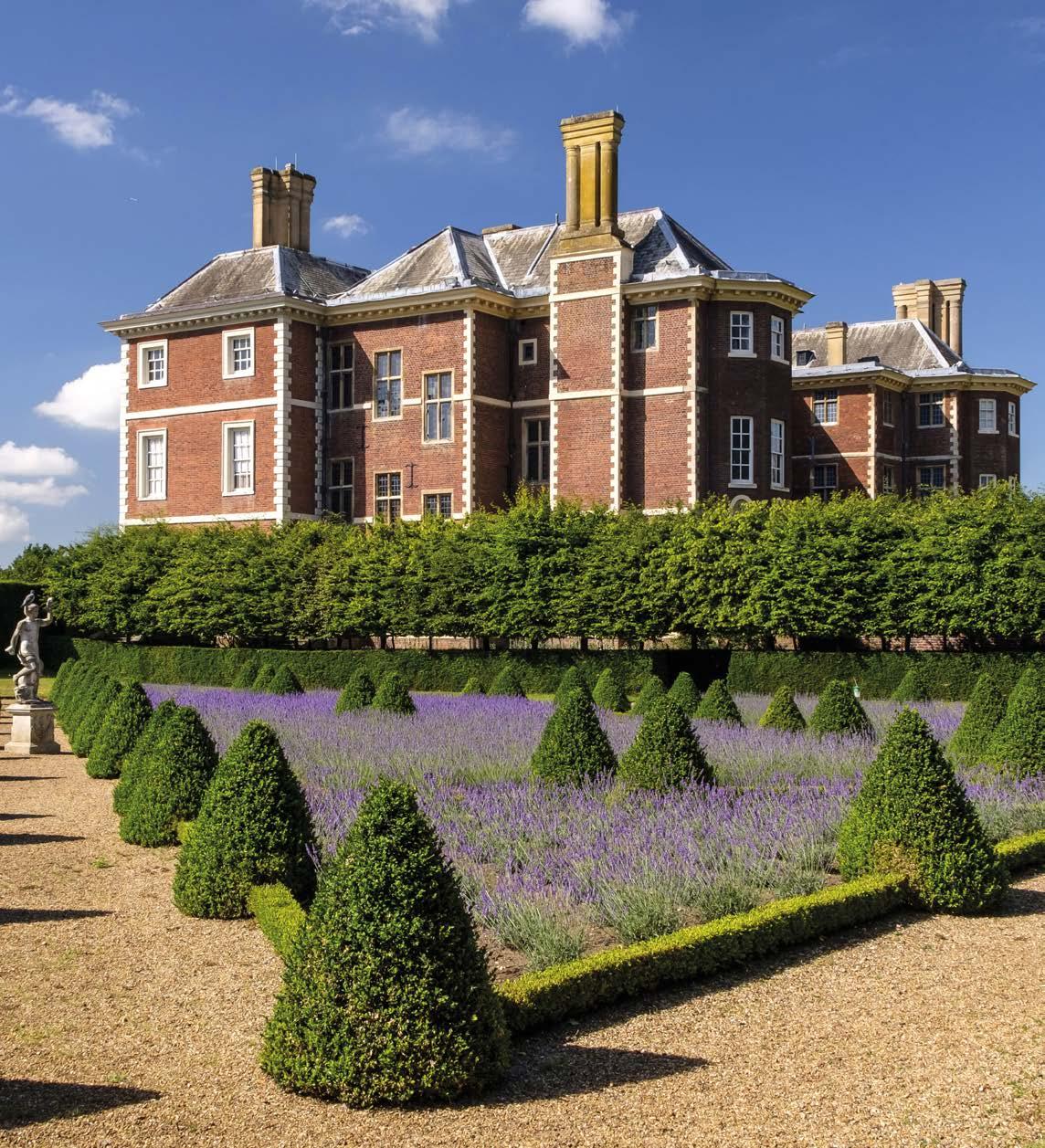
10 minute read
A sunny swathe of Kent and Sussex, so little changed over the centuries, harbours some of the country’s finest gardens
This image: Ham House and the Cherry Garden Left: Chiswick House was built in 1729
STATELY SPLENDOUR
Discover London’s finest historic houses, conveniently clustered together in the city’s westernmost reaches
WORDS MONICA WOODS
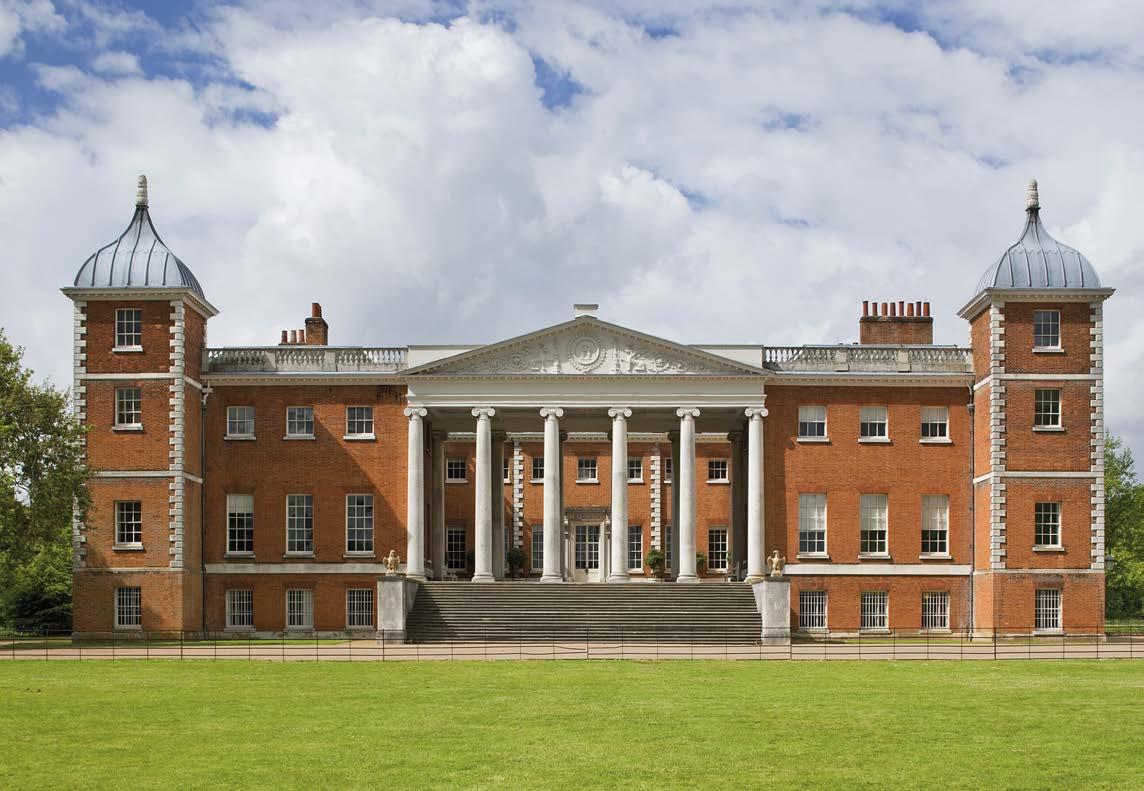
As well as palaces, parks and parliamentary buildings, the British capital is dotted with a number of splendid stately homes. West London seems to have more than its fair share, no doubt explained by its proximity to the Thames and ease of access into town. These westernmost reaches offer a welcome escape from the hustle and bustle of central London, but rewind 300 or so years, and they would have represented a proper rural retreat. For today’s visitors, an easy day-trip provides an authentic taste of life to the manor born.
Nestled between two of London’s busy arteries, heading towards Heathrow airport and into the city centre, Chiswick House is a striking, chalk-white mansion set in exquisite gardens. Built in 1729 in the neo-Palladian style, with a six-columned entrance reached by symmetrical staircases, it was inspired by Lord Burlington’s travels in Italy. But this wasn’t a token post-Grand Tour commission. Richard Boyle, the third Earl of Burlington, designed the house himself, with the help of his friend and protégé William Kent.
Two Grand Tours had fuelled Lord Burlington’s fascination with classical art and architecture and the work of the 16th-century Venetian architect Andrea Palladio, in particular. Chiswick House was inspired by Palladio’s Villa Capra in Vicenza, although Burlington incorporated elements of other Roman buildings – the coffered effect inside the dome, for example, was modelled on Rome’s Basilica of Maxentius. The debt Burlington owed to Palladio, and to his English disciple Inigo Jones, is made clear by the statues of both men standing at either side of the front staircases.
The house functioned as a showcase for Lord Burlington’s extensive art collection and a symbol of his passion for Palladio. Paintings by Velázquez, Rembrandt and Van Dyck once hung in the lavish reception rooms, where the walls are lined with rich velvet, and elaborate gilding catches the light. With no kitchen and limited bedchambers, the villa was not intended as a private home. It was deemed ‘Too small to live in, and too big to hang to a watch’ by courtier Lord Hervey, but provided ample gallery and entertaining space, as well as peace and quiet in the grounds.
William Kent designed the gardens to complement the house. Columns, sphinxes, obelisks and even an Ionic temple are arranged around the grounds, lending an air of formality. But with his gently sloping lawns and naturalistic water features, Kent was in fact conceiving a new, informal approach to gardening which would inspire the English Landscape movement. Kent’s designs had an impact as far away as New York, where they influenced the planting in Central Park.
The gardens have other claims to fame, as the home of a famous camellia collection and as the location of the world’s first promotional pop videos, filmed by The Beatles in 1966 to accompany the songs Paperback Writer and Rain.
Above: The east front at Osterley Park and House Right: The Blue Velvet Room at Chiswick House

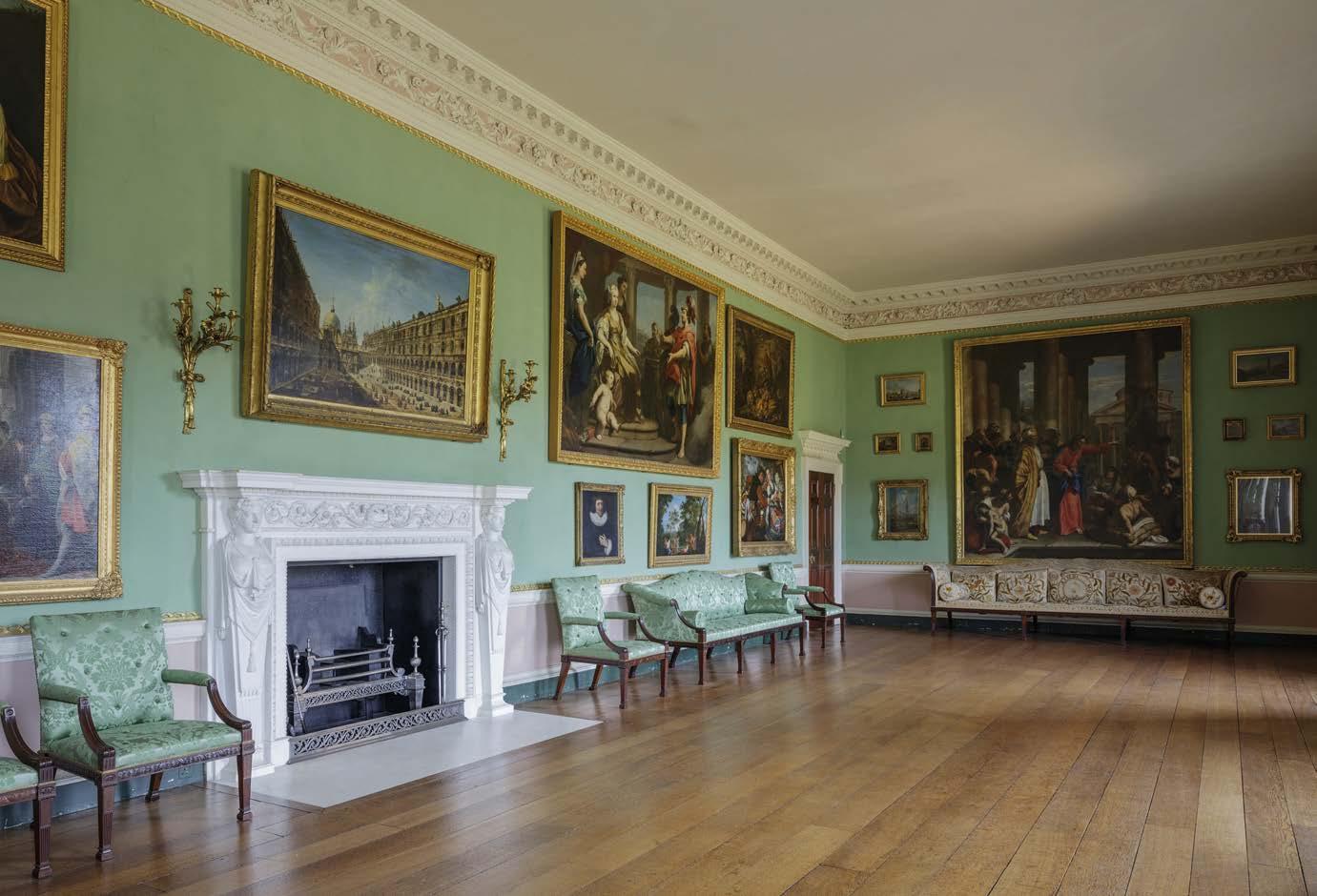
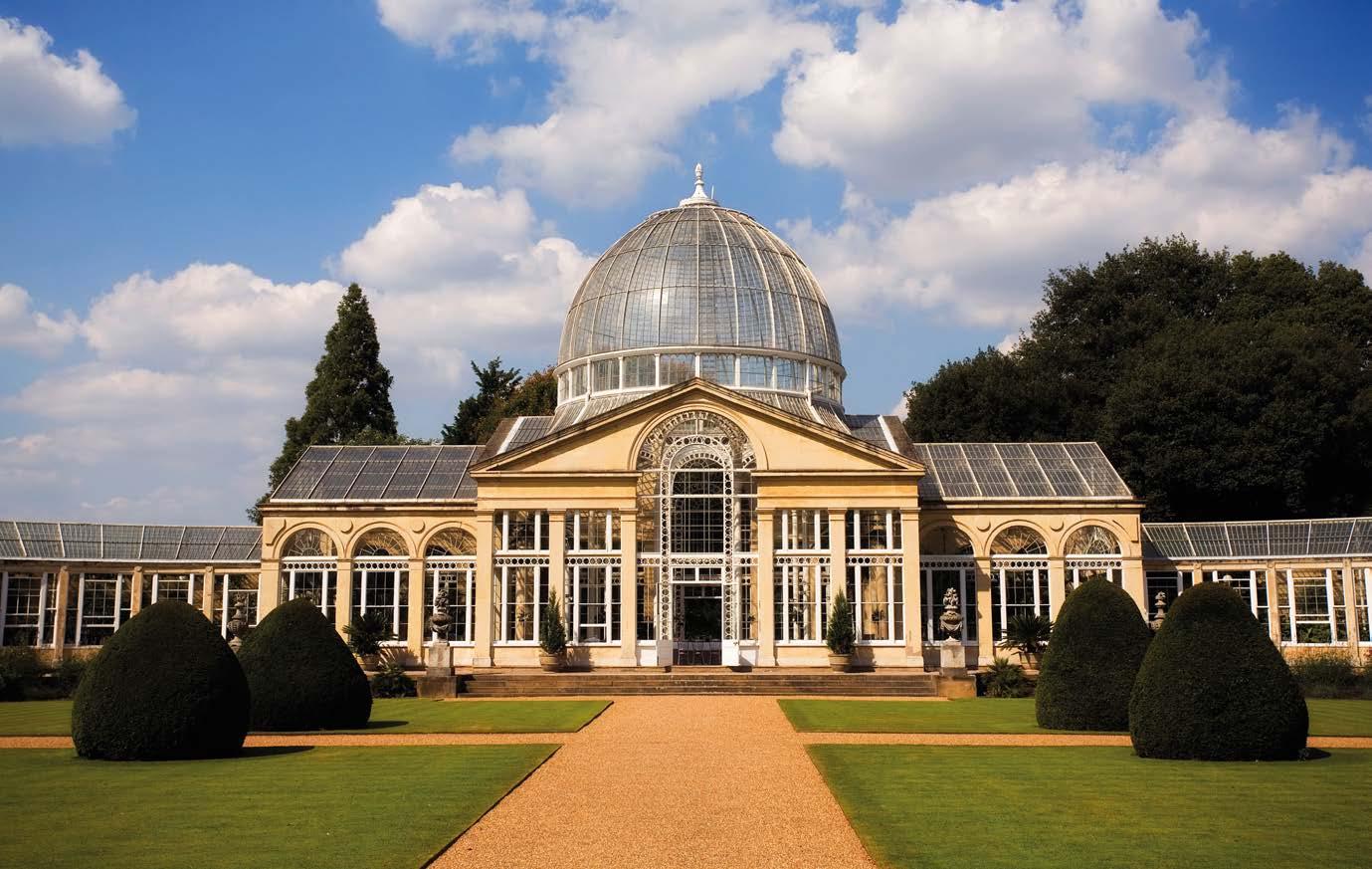
The Chiswick House estate passed by marriage to the Dukes of Devonshire in 1753. The fifth Duke made substantial changes, demolishing the original Jacobean house, to which Burlington’s villa was linked, adding wings on either side and redesigning the gardens. When the Devonshires rented out the house, many historic items were moved to Chatsworth, where they remain today. Some £12 million was spent on a major restoration in 2010, which has helped return the house and gardens to a close likeness of their 18th-century splendour.
Heading a little further west delivers more Neoclassical splendour, and more green space, but on a larger scale. National Trust-run Osterley Park and House was described as ‘the palace of palaces’ by Horace Walpole – whose own Gothic-revival pad, Strawberry Hill House, is not far south in Twickenham. The original 16th-century building here was transformed, from 1761, by Scottish architect and designer Robert Adam for the wealthy Child family, whose ancestor Josiah Child was Governor of the East India Company.
The relatively plain red-brick exterior – albeit with imposing turrets and double portico – belies a sumptuous interior, including an elegant entrance hall adorned with intricate plasterwork and statuary, and the Long Gallery, which spans 40 metres and has featured in films such as The Young Victoria. These grand rooms provide a backdrop to the family’s original collection of fine furniture, much of it specifically designed by Adam, as well as porcelain, silverware and tapestries.
Strolling through Osterley’s gardens, park and farmland, city life seems very far away. The summerhouse, designed by Adam, was a favourite retreat of Sarah Child, who lived at Osterley from 1763 to 1793. A keen gardener, she planted exotic blooms in front of the semi-circular structure, which was filled with scented plants and fragrant citrus trees. Mrs Child’s Flower Garden has been recreated following the original planting and comes into its own in the summer months. In addition, the Tudor walled garden is bursting with blooms and includes an ornamental vegetable garden, whose bounty is used in the Stables Café. Grazing creamy-white Charolais cattle complete the bucolic scene.
Nearby Syon Park, the London home of the Duke of Northumberland, hugs a bend in the Thames, facing the Royal Botanic Gardens at Kew. Syon Abbey, its name taken from Mount Zion, once stood on the site. Under Henry VIII, however, the Bridgettine order was dissolved and the property passed into royal hands. It was rebuilt in an Italian Renaissance style, with the interiors later remodelled by Robert Adam. Henry VIII has more than one connection with the place: Catherine Howard, his fifth wife, was imprisoned here before her execution, while
Pocahontas travelled to London and stayed in the Brentford area in the last year of her life. A plaque at Syon House commemorates her visit
CAPTURE IT LTD/SYON HOUSE © PHOTO:


The Great Hall at Syon House

BOOK AHEAD
Check the houses’ websites for information on opening times. Chiswick House Lord Burlington’s splendid Palladian villa has 65 acres of gardens to explore. www.chiswickhouseandgardens.org.uk Osterley Park and House A handsome Georgian country estate surrounded by formal gardens and parkland. www.nationaltrust.org.uk Syon Park The London home of the Dukes of Northumberland for more than 400 years, Syon Park boasts a fine art collection. www.syonpark.co.uk Ham House This atmospheric 17thcentury mansion is reputed to be one of Britain’s most haunted houses. www.nationaltrust.org.uk
the funeral cortege of Henry himself paused here, en route to Windsor.
An even more surprising cameo appearance was made by Mataoka, better known as Pocahontas. Having married an Englishman in her homeland of Virginia, Pocahontas travelled to London and stayed in the Brentford area in the last year of her life (1617), possibly at the invitation of the 9th Earl of Northumberland. A plaque at Syon House commemorates her visit.
The grounds at Syon may be no match for Kew, but they do boast a huge glasshouse, a pioneering feat of architecture and engineering. Completed in 1830, it was the first large-scale metal and glass conservatory of its kind. In the 1880s, great bamboos and palms swayed underneath its high, filigreed dome. Today, the best botanical specimens are to be found in the park itself, which is home to more than 200 species of rare trees, introduced from North America, the Himalayas and China in the late 18th century. The park’s open vistas and ornamental lakes are the work of Capability Brown, following the tenets of the English Landscape movement forged by William Kent.
The winding Thames and its leafy banks conjure up particularly picturesque scenes as the river meanders west. Nowhere more so than at Ham House, situated right on the river – the name of the small district derives from the Old English hamm, meaning ‘land in a river bend’. The best way to approach this historic Restoration property is via the traditional passenger ferry, boarding on the north bank, near Marble Hill House (another Palladian villa).
The most complete surviving 17th-century mansion in Europe, Ham House was originally built in 1610. The house and estate were gifted to William Murray by his childhood friend, King Charles I. Murray undertook major alterations from 1637, but it was his daughter, Elizabeth, and her later husband, the Duke of Lauderdale, who masterminded the house as it stands today. The Duke and Duchess lavished funds and energy on their project, commissioning Baroque ceiling murals, carved oak panelling and a gilded staircase. Their rich collections of lacquerware, textiles, books and paintings are displayed to stunning effect in the unmatched grandeur of these interiors.
The couple designed the garden themselves, the layout of which is one of the oldest surviving examples in Britain. It includes a space for contemplation, the Wilderness, a walled organic kitchen garden, and a formal, lavenderfilled Cherry Garden. As with the house, the Duke and Duchess aimed to impress, and succeeded.
Above: The Green Closet at Ham House
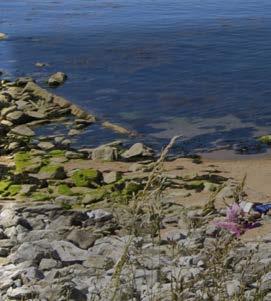
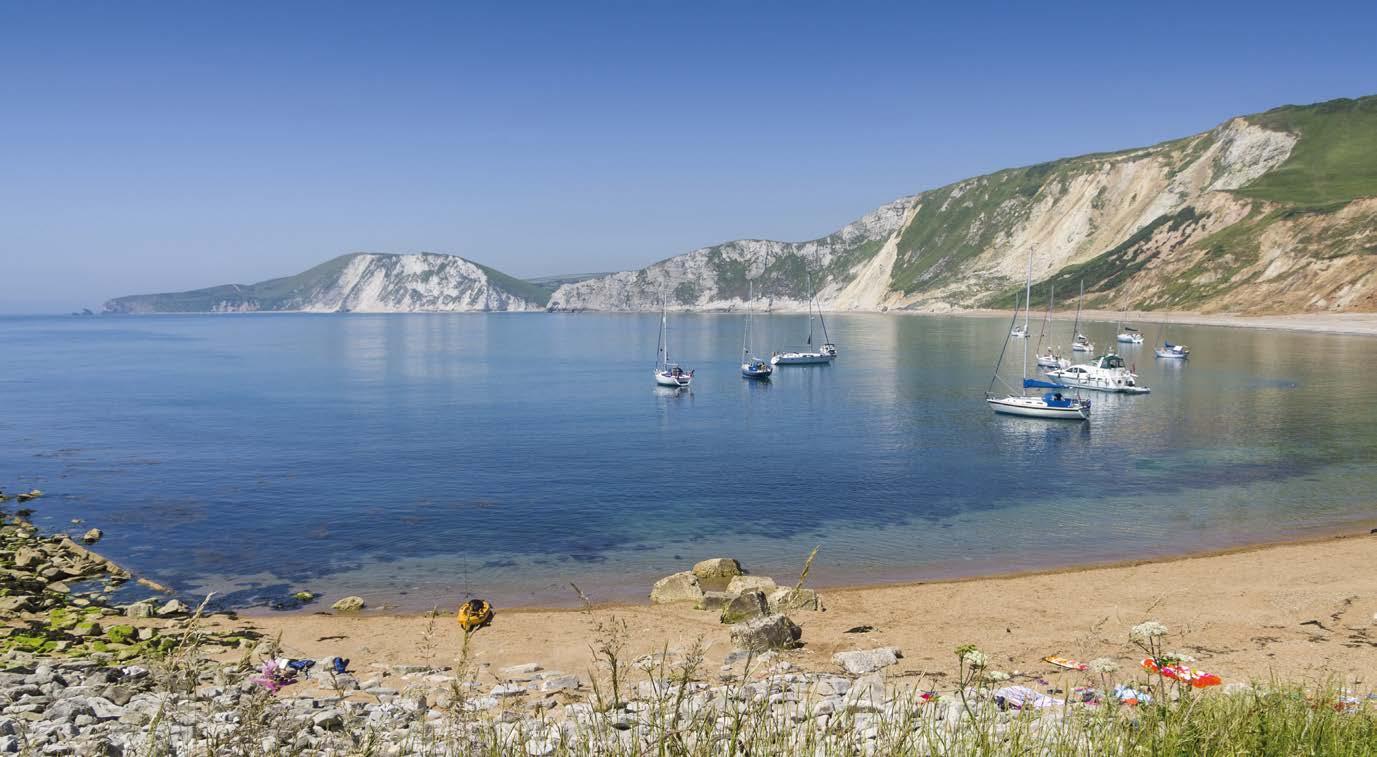

SHORT BREAK Specialists
For your UK short break, look no further than Great Little Breaks, experts in handpicked holidays with added extras

Want to book a short break in the UK but overwhelmed by the choice on offer? Your first port of call should be Great Little Breaks and their curated selection of brilliant breaks across the country.
Great Little Breaks handpicks the very best accommodation providers, attractions and partners, bringing them together to create unforgettable memories and experiences for you.
Breaks are grouped into Collections, such as Coastal, Country and Romantic, so you can easily zoom in on your perfect break – or you can simply browse by region, from the South Coast to Scotland.
Whether you’re keen to feel the sand between your toes, soak up countryside views, discover a new city or take in the bright lights of London, Great Little Breaks offers a variety of delightful options.
You can make your break extra special with a choice of added extras, from afternoon tea or dinner in an award-winning restaurant to little touches such as the option of late check-out or a packed lunch to take on your day’s adventure. Great Little Breaks will take care of it all, so you can relax and look forward to your getaway.
You can book with confidence too. They pride
Further afield, explore the outstanding Jurassic Coast World Heritage Site, boasting 185 million years of history, perfect for keen walkers – be sure to keep an eye out for fossils along the way...
When it comes to finding the perfect escape, there really is no better place to unwind than this picturesque coastal town.
themselves on their customer service: 98 per cent of customers would recommend Great Little Breaks to their friends and family.
Most of the short breaks are fully flexible, giving you the peace of mind that, should you need to, you can change your dates or cancel your booking free of charge. And they are ABTA bonded, so customers are financially protected too.
A generous price promise means you won’t be out of pocket should you find the same short break at a lower price anywhere else.
Feature Location: Bournemouth Discover the meaning of true relaxation with the perfect coastal getaway to Bournemouth. Sink your toes into soft, golden sand, sit back and relax on a deckchair with a good book, or enjoy a stroll along the town’s seven miles of award-winning beaches.
There’s plenty to keep you entertained beyond the beach too. Wander along the famous pier, admiring the breathtaking views, take in the impressive collections of the Russell-Cotes Art Gallery & Museum or visit Bournemouth’s beautiful parks and gardens, idyllic places to watch the world go by.
For more inspiration and a choice of coastal locations, call 01905 792801 or browse the options at www.greatlittlebreaks.com/britain-magazine
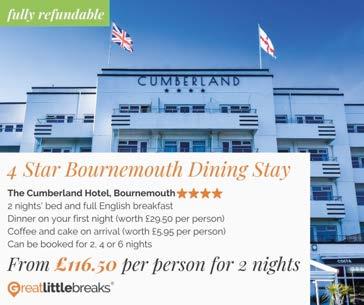
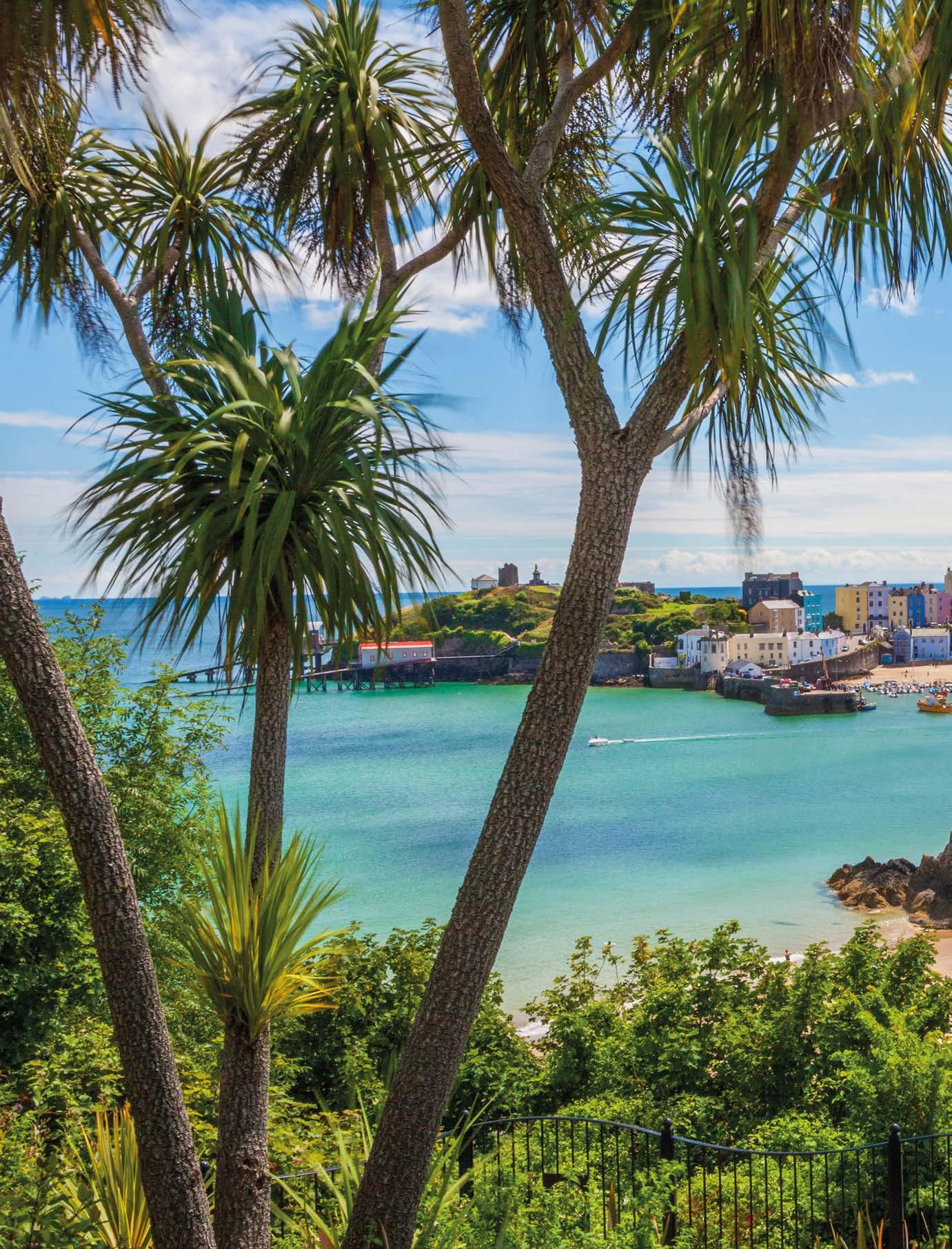
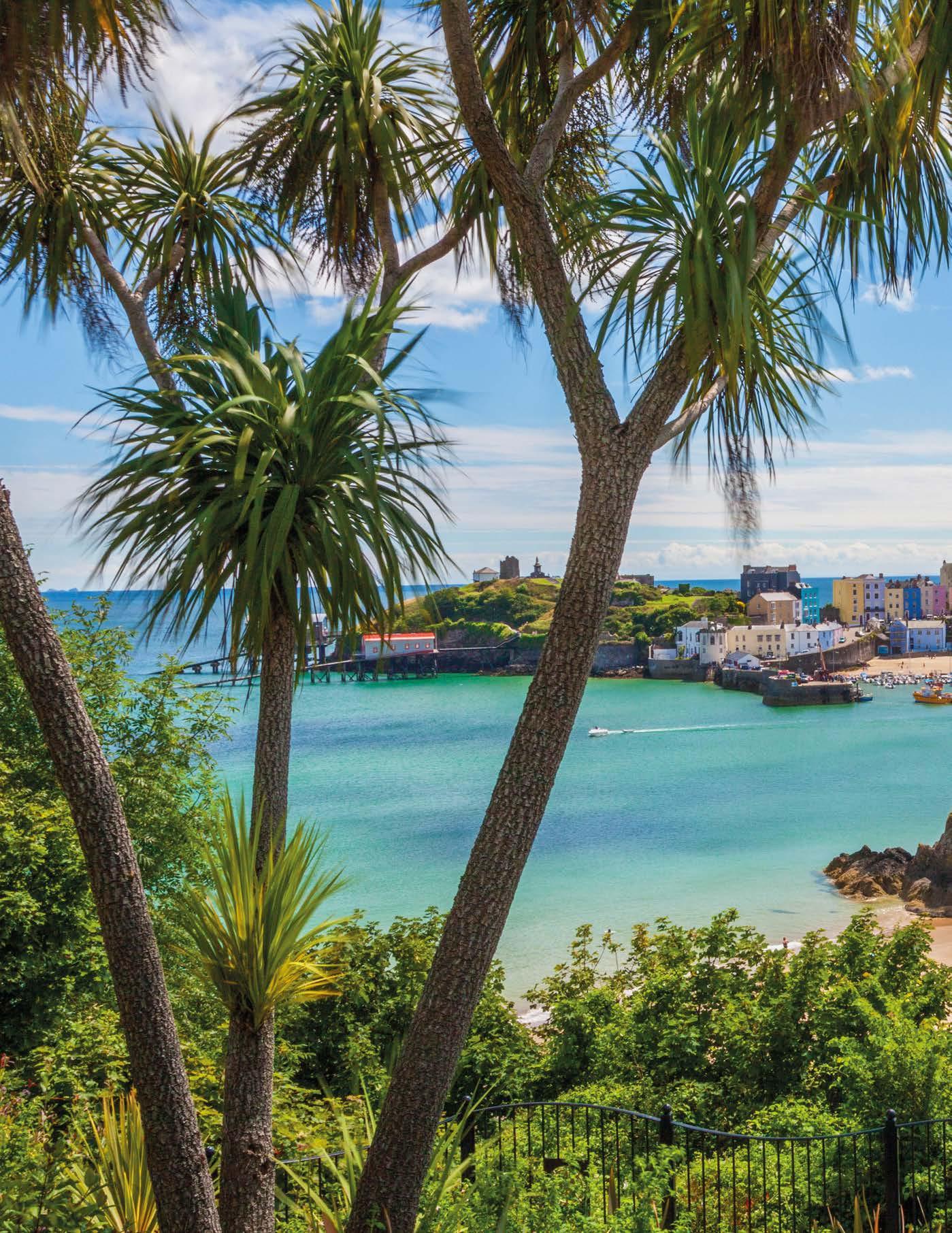
Tenby Harbour and North Beach in Pembrokeshire, South Wales




